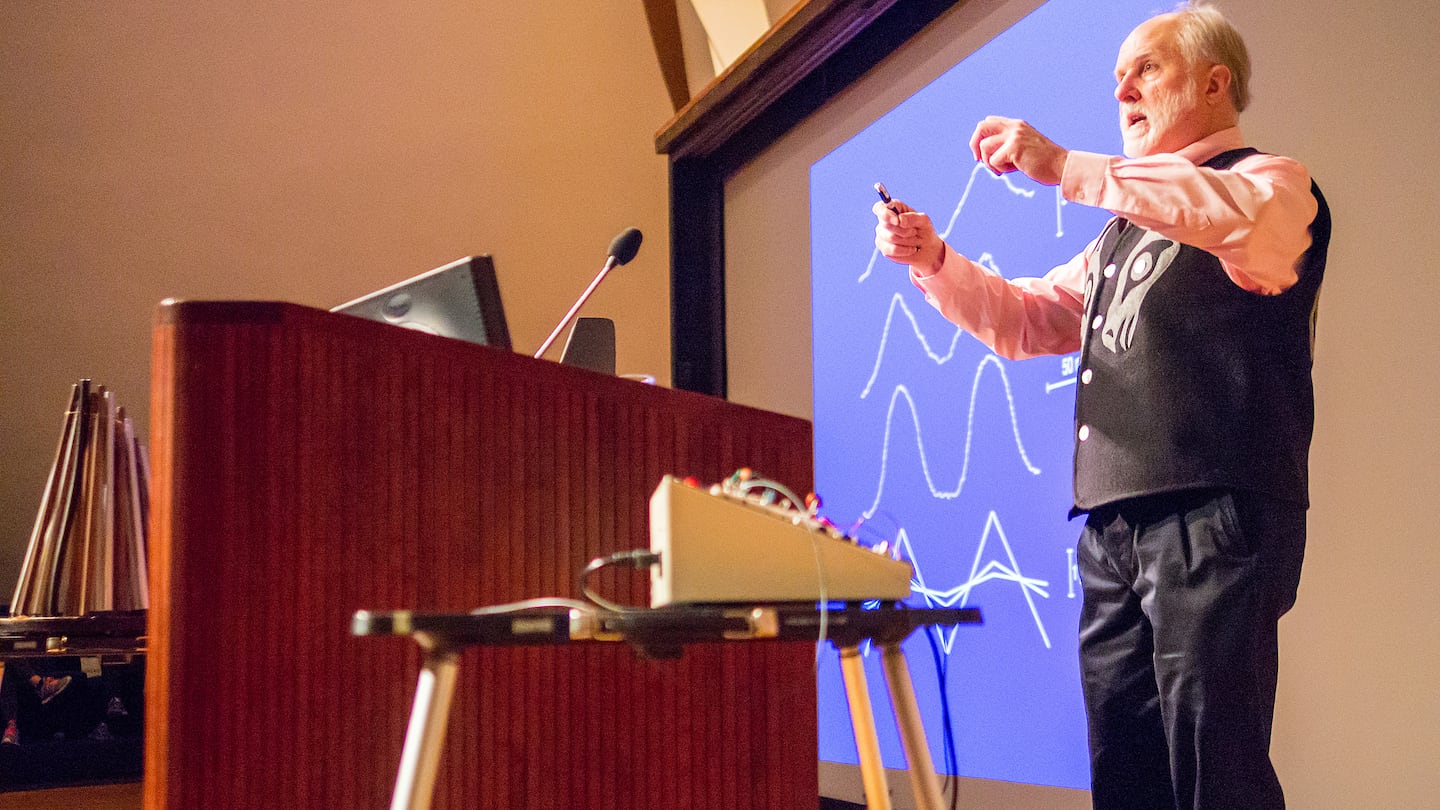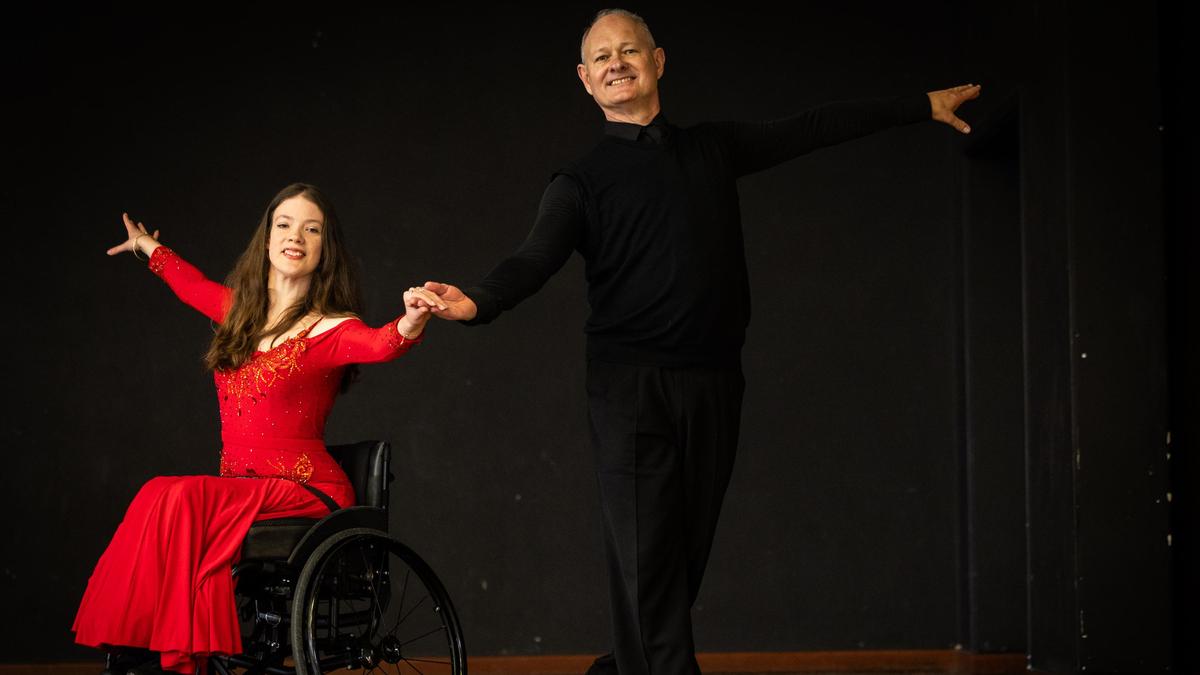
And they have long known that microscopic receptor cells in the cochlea play a role in the process of hearing. But by the time Dr. Hudspeth began his research in the 1970s, it was still unclear how these cells — known as hair cells (the name derives from tufts of cylindrical, hairlike rods known as stereocilia) — transformed the mechanical vibrations of sound waves into nerve impulses that the brain could interpret as, say, a child crying or a dog barking.
Dr. Hudspeth “provided the major framework” for this understanding, the committee that awarded him and two other scientists (Robert Fettiplace and Christine Petit) the Kavli Prize in Neuroscience for their pioneering work on the processes of hearing wrote in its citation in 2018.
Each cochlea contains about 16,000 hair cells. Atop each cell, 20 to 300 of these rods are gathered in a bundle — the shortest to the tallest — in rows that resemble a staircase or a pipe organ. Hair cells line the cochlea, with each tuned to a narrow frequency range that collectively decodes the broad spectrum of tones in every sound.
As sound waves enter the cochlea, the stereocilia rods begin to slide next to one another. Dr. Hudspeth theorized that this motion toward the tallest rods created tension on elastic tethers that pulled open tiny pores — essentially trap doors — on the tips of the stereocilia.
His hunch was supported by another scientist, James Pickles, who discovered that each rod is attached to neighboring rods by an elastic protein filament, a kind of microscopic rubber band or spring.
Dr. Hudspeth revealed that when the trap doors open, positively charged ions of potassium and calcium flood into the cells, creating an electrical signal that is carried by the auditory nerve to the brain.
The opening and closing of the trap doors, Dr. Hudspeth found, happens in microseconds, a speed 1,000 times as fast as that of our other senses. The stereocilia, he said, can create a signal that the brain detects by moving only the width of a water molecule.
He showed that hearing depends not only on speed but also on a built-in amplifier system, which can boost a sound signal by about 1,000-fold and sharpens frequency tuning, making it easier to tell voices apart and understand nuances in speech.
Dr. Hudspeth “was the one who really figured out how hair cells worked,” David Corey, a neuroscientist at Harvard University and one of his former graduate students, said in an interview.
Albert James Hudspeth was born Nov. 9, 1945, in Houston. His father, Chalmers Hudspeth, was a lawyer. His mother, Demaris (De Lange) Hudspeth ran the household.
From an early age, Jim, as he was known to his colleagues, was drawn to the orderliness of nature. He and his brother, Tom, amassed a menagerie at home of 200 animals, including box turtles, toads, raccoons, opossums and armadillos.
He attended Harvard, where he received a bachelor’s degree in biomechanical sciences in 1967, a master’s degree in neuroscience in 1969, a doctorate in neuroscience in 1973 and a Doctor of Medicine degree in 1974. He joined Rockefeller University’s faculty in 1995 and was a member of the National Academy of Sciences.
His 50-year career deciphering the process of hearing began by accident, he said. He was more interested in brain research. But while he was in graduate school, one of his professors asked him to deliver a paper on hearing and balance.
“I was so amazed that so little was known about hearing, yet it’s so manifestly important,” he said in a 2020 Kavli Prize lecture.
Torsten Wiesel, a Nobel laureate who was Dr. Hudspeth’s graduate faculty adviser at Harvard, described him as impatient with small talk but brilliant and brimming with ideas. He said in an interview that he had nominated Dr. Hudspeth for a Nobel Prize three times, including this year, adding, “I hoped he would get the prize before he died.”
In the mid-1970s, while Dr. Hudspeth was at the California Institute of Technology, he and his lab began to explore whether the movement of the bundles atop hair cells created electric signals. A challenge for studying the human cochlea is that it is tiny, fragile and inaccessible, so Dr. Hudspeth studied the dissected inner ear of bullfrogs. Under a microscope, he used a small glass rod to push gently against the tips of hair bundles.
In the latter stages of his career, Dr. Hudspeth and colleagues found a way to keep a sliver of the cochlea of a gerbil functioning outside the body, which was related to his study of potential ways to reverse hearing loss.
Once human hair cells die — from such means as repeated exposure to loud noises, aging, and certain diseases and medications — they do not regenerate. An estimated 1.5 billion people experience some degree of hearing loss, according to the World Health Organization.
Dr. Hudspeth explored — along with many other scientists — possible ways to restore hair cells, which many nonmammalian animals like fish and birds can do. One method involved druglike compounds that release the genetic brake that stops cells from multiplying during development.
Along with his wife, Dr. Hudspeth is survived by a daughter, Ann Hudspeth; a son, James Hudspeth; a grandson; and his brother, Tom.
Just before Dr. Hudspeth died, the Rockefeller University optioned technology regarding promising research into restoring hair cells in mice and rabbits. The technology, developed in Dr. Hudspeth’s lab, has been enhanced by one of his former postdoctoral researchers, Ksenia Gnedeva, now a professor at the University of Southern California.
“If all goes well,” Gnedeva said in an email, “these compounds will soon be tested in human clinical trials. It pains me deeply that Jim will not be here to see where our work leads.”



